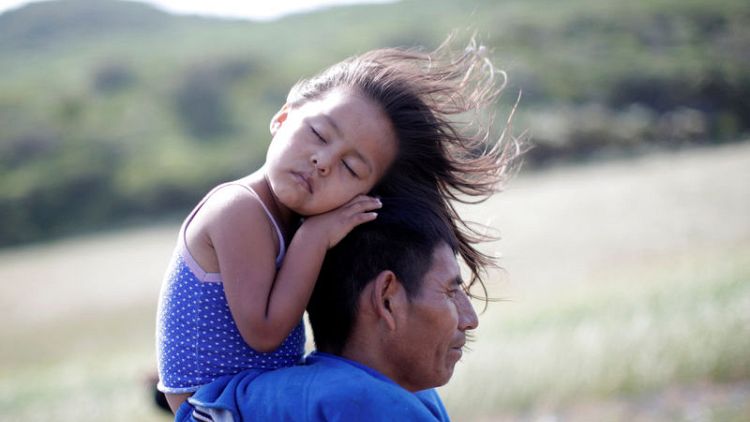(Reuters) - A 5-year-old boy rests by the roadside with his mother as thousands of fellow migrants trudge past. A woman grips her two young daughters as they flee a cloud of tear gas. A child slithers under a fence to reach U.S. soil. A man sobs in a U.S. border patrol vehicle as his dreams of a new life are dashed.
These are the faces of migrants whose trek from Central America to the United States has transfixed the continent since mid-October.
As they drew closer to the U.S. border with Mexico, the thousands of mostly Honduran migrants became a symbol of U.S. President Donald Trump's tough policies on immigration.
For both the United States and Mexico, the caravan has raised hard questions about how to respond to a seemingly unending procession of migrants who say gang violence has made their countries unlivable.
The journey, made partly on foot, is punishing. And for those who reach the Mexican border city of Tijuana, the way forward is uncertain. U.S. officials have implemented a system of "metering," which limits how many can seek asylum in Tijuana.
Some migrants scramble over the border to avoid a months-long wait, handing themselves in to authorities in the hope they will be released.
The caravan has also created an early test for new Mexican President Andres Manuel Lopez Obrador as he tries to establish a relationship with the Trump administration.
Mexico, once the prime source of migration to the United States, now has to manage the rising flow of Central American families heading north to its own border. Lopez Obrador, who took office this month, is still weighing a U.S. proposal that would make asylum seekers wait in Mexico as their claims are decided, a process that can take years.
The caravan came on the heels of another group this spring, and it is not likely to be the last. For migrants with few options, travelling in large groups is safer than making the trip alone or paying an illegal people smuggler, known as a "coyote."
(Click on https://reut.rs/2R5Ch3Z to see a related photo essay)
(Writing by Julia Love; Editing by Bill Rigby)
